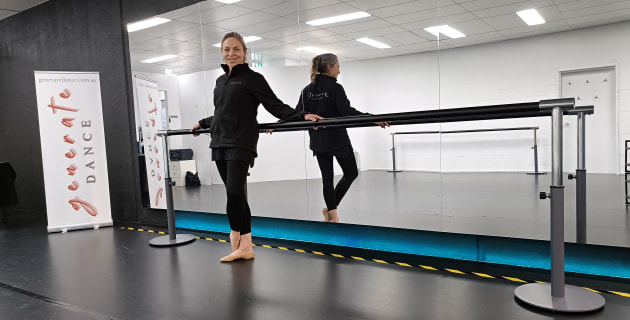 Read more
Read more
Providing dancers, families and the community a sense of belonging and a shared purpose, Generate Dance works with students to build skills, confidence and creativity, writes Michelle Dursun Read more
Everybody wants scintillating insteps. But if you are not born with them, can they be make? asks Nina Levy
In the first part of our series on pas de deux, we discussed some basic preparations. In this issue Michelle Dursun gets down to specifics
Nina Levy has never been a big fan of competitions. She asks two competition junkies what they like about them.
When is a student ready to start pas de deux, and how should they prepare? Michelle Dursun begins a new series.
Right from when he began lessons at age five, Aeden Pittendreigh knew he wanted to be a classical dancer.
A holistic approach to training and health can reap endless rewards in the classroom, writes Michelle Dursun
Michelle Dursun looks at the qualifications from the point of view of a teacher in a private school.
Thousands of dancers take part in competitions every year. But is too much emphasise placed on winning? Michelle Dursun investigates.
Youth dance companies give students a taste of professional life.
Some companies are an arm of a school and/or require participants to be enrolled as students; we have listed only those companies that, as far as we can make out, are independently run and hold open auditions.
The hands play a vital part in a dancer’s expressiveness, writes Denise Richardson.
The expression in your eyes and the direction of your gaze add essential refinement to your dancing, writes Denise Richardson.
Is there a secret to a high, light jump? Nina Levy investigates.
Getting your legs around your ears and holding them there requires a combination of strength and flexibility, writes Nina Levy.
Eating disorders are relatively rare but, when they do strike, it is more common among adolescent girls, and particularly those in areas that demand a lean body shape. Like dance. Karen van Ulzen consulted three former dancers-turned-psychologists – Dr Gene Moyle, Dr Peta Lilley and Lucinda Sharp – on ways to ensure pupils are not put at risk.
DANCE teachers and educators are being urged to take part in the National Dance Qualifications Project – an Australia-wide review of teaching qualifications.